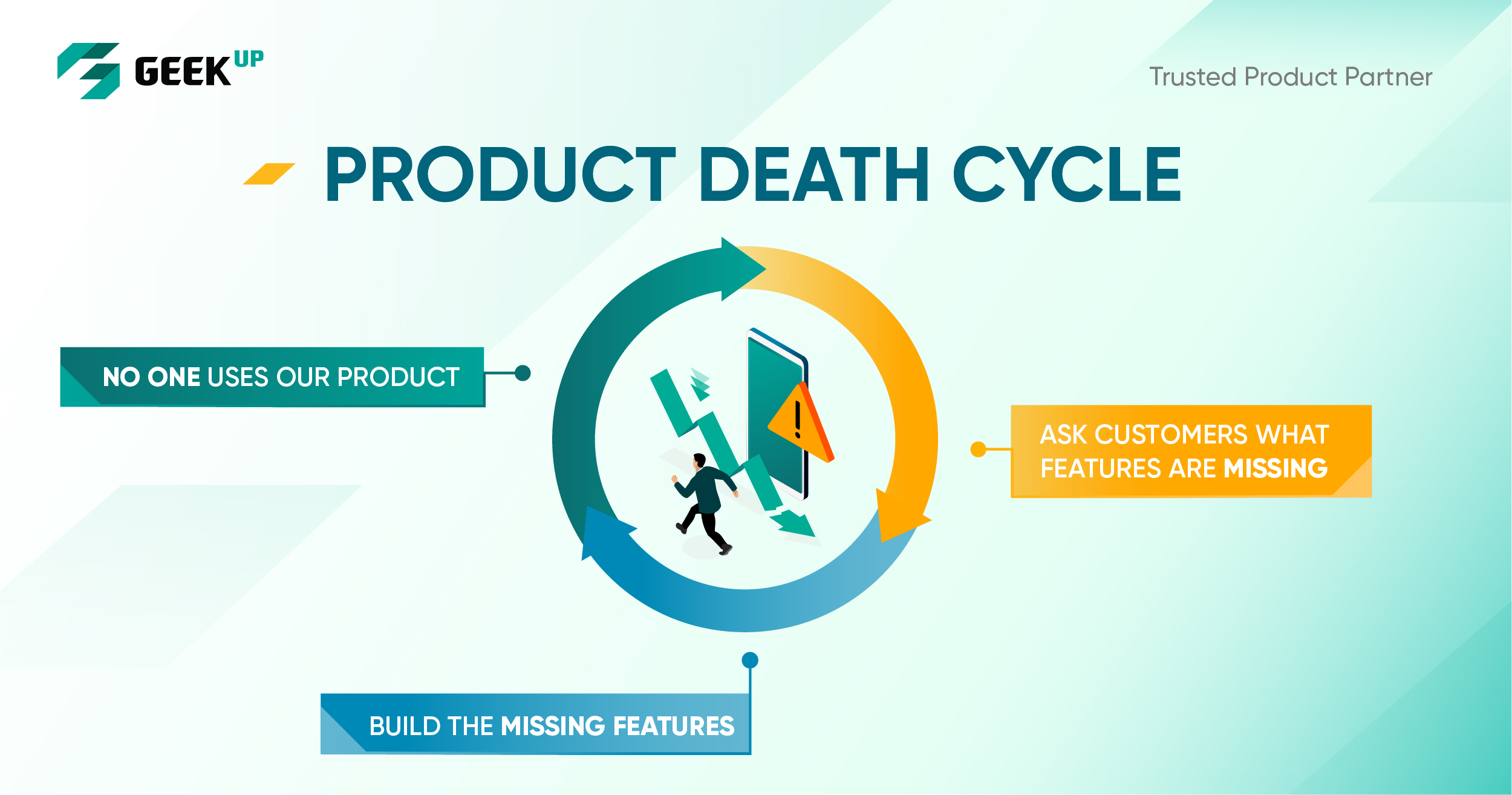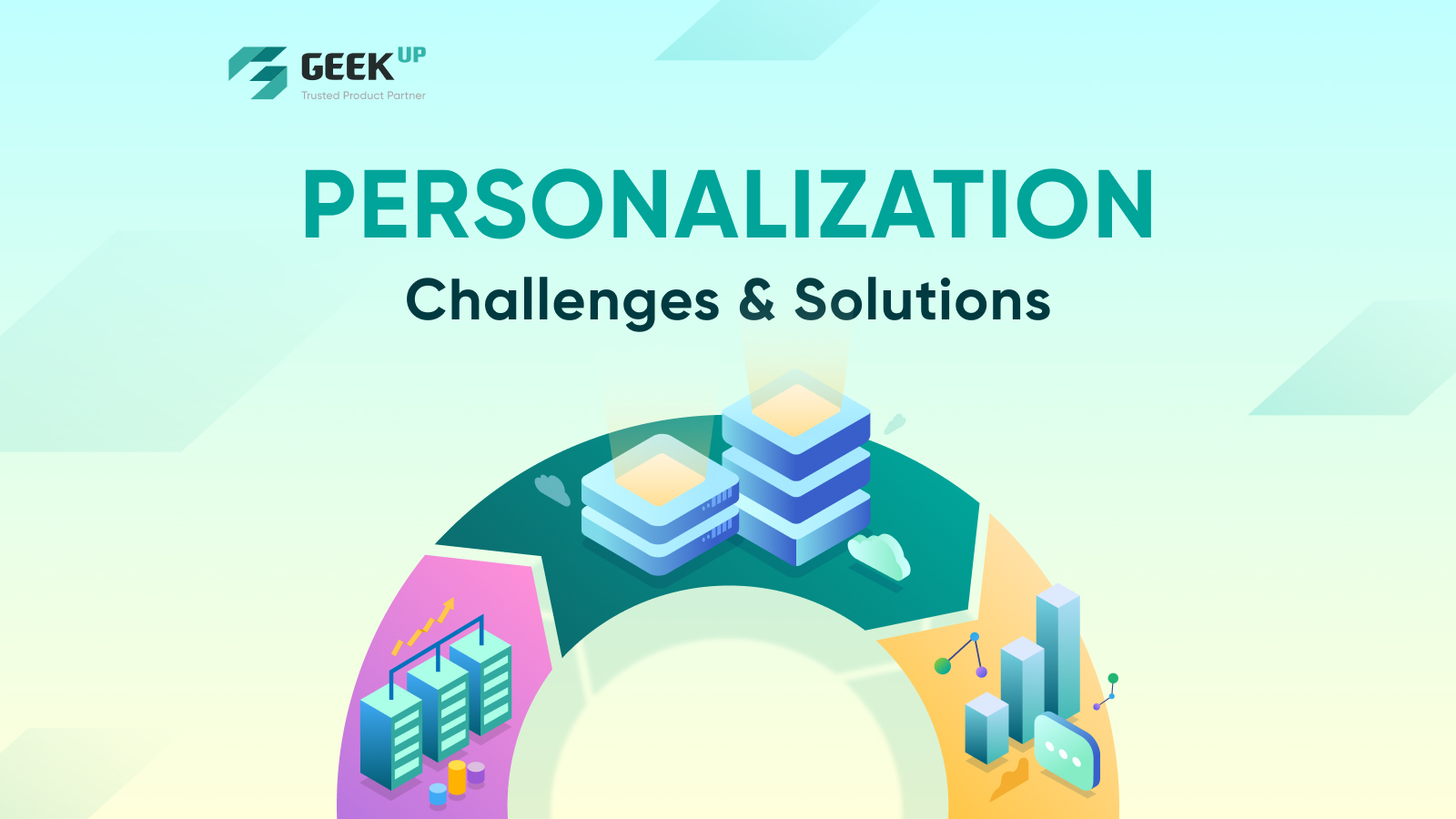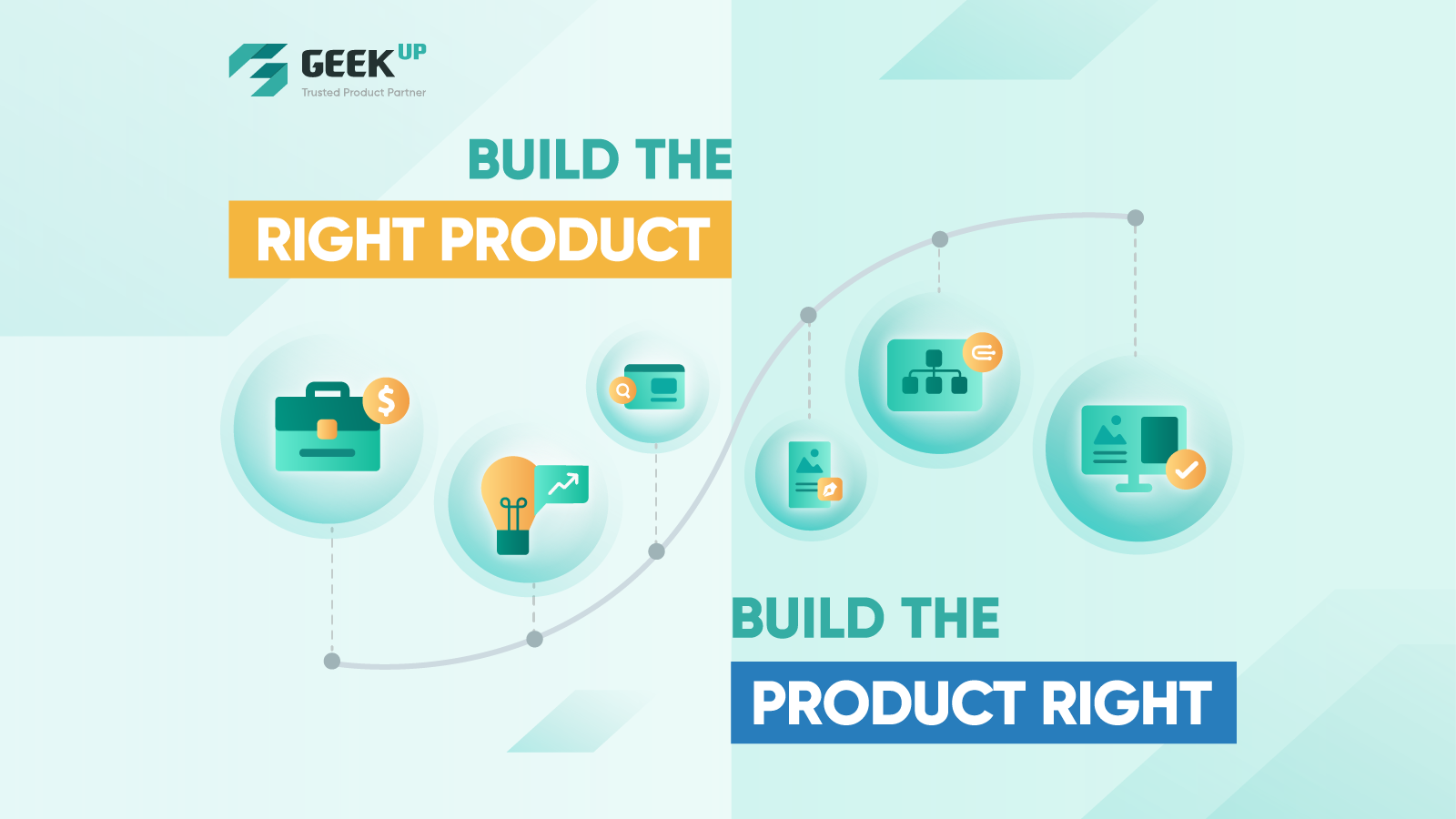STRATEGY
5 min read
Product Death Cycle - When user empathy goes wrong

What is the product death cycle?
So what exactly is the Product death cycle? Let's look at each step and see why it happens:
1. No one uses our product
Usually, digital products in the early stages will have a hard time attracting new users. This is not a problem itself that directly leads to the Product death cycle. The real problem lies in how the development team reacts to this issue and makes subsequent decisions.
2. Ask customers what features are missing
One of the big mistakes at this stage is to let users make the final decisions, rather focusing on the vision and core values of the digital product. This manifests itself in asking users “What features are missing?”
There are many problems with this approach:
- Existing users may not represent the entire potential market for that product, including those who have not experienced the product. As a result, opinions may be skewed toward a niche group, and the features they recommend may not be absolutely necessary.
- User surveys are a great way to solve design problems, but users can't be expected to come up with their own design solutions. That's the job of the product development team. Users can talk about their problems with the product, but that doesn't mean they have the skills or expertise needed to come up with a solution.
- The question “What features are missing?” make the assumption that simply adding the feature will fix the problem. But there are many other reasons why the product is problematic. It can come from mispricing, or not being marketed well, wrong user positioning, etc.
3. Build the missing features
The development team will fall into the Product death cycle trap when they immediately start building on the missing features that users suggest. This quickly leads to a “next feature” loop – with the mistaken belief that just adding one more new feature will suddenly make people want to use the product.
As David Bland, who coined the term “Product death cycle”, said: “Customers don’t always know what they want. You always have to infer it and you have to observe and you have to see qualitatively and quantitatively what’s going on with the product and make investment decisions in where you want to take the product.”
How to avoid the Product death cycle trap?
To prevent or escape the Product death cycle trap and build digital products that bring value to both users and business goals, businesses need to have solutions that are tied to the core values of the product. Here are some methods that GEEK Up recommends:

1. Always keep in mind the product vision and strategy
The first and most important step to prevent this loop is to always look at the product vision and strategy every time a new feature is considered. The development team needs to ask themselves questions to align the product's purpose with the overall direction of the business, including:
- Why do we build this product?
- How does it solve user problems?
- Who are the users of this product?
- What is the desired user outcome regardless of functional, emotional or social relevance?
- What is the core value proposition of the product?
- How does it align with the company's vision and strategy?
- What value will it create for the business and will it do so?
- What does the path to product success look like?
2. Focus on outcome, not on output
The team needs to clarify the output and outcome of the product development project. Rather than placing all the emphasis on the quantity features or services, ensure a balanced focus towards the quality of the product as a whole. A product that brings real value to businesses and users will be judged by its outcome, not just by its output.
This is a better approach to measuring productivity as it will focus on the impact of a feature on the real life of the user.
3. Don't let users design the solution
While it's important to understand user problems and needs, it's more important to not just rely on users to design solutions. What the team should be looking for is the root cause of their problems, not just general requests and suggestions.
To do this, the development team needs to focus on gathering valuable insights through user surveys, opportunity mapping, and communication between the design and development teams. This approach helps build a common understanding and allows for diverse perspectives, and inculcates a product mindset in an organization where everyone feels like they're building a product that matters.
4. Test assumptions with Prototypes and MVPs
To make more insightful decisions on the product’s next stage, the development team should run small tests and validate ideas through prototypes and minimum viable products (MVP) before embarking on product-user-fit standards. This approach allows you to assess feasibility, usability, value, viability, and ethical considerations before investing significant resources.
The goal is to build products that users love, that meet their needs as well business goals at the same time. By developing a suitable strategy and applying a product mindset, businesses will escape the product death cycle and build products that stand out in the market.
61 likes
Get latest updates from GEEK Up
Our email packed with digital product insights, trends and case studies.


